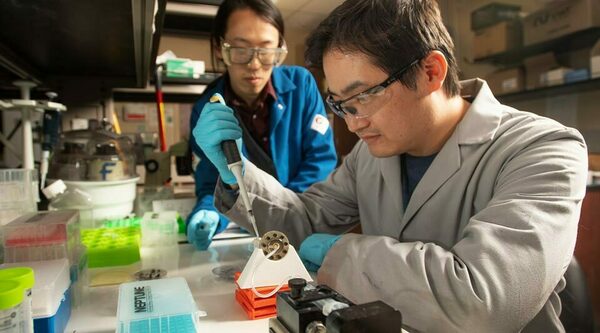
Researchers at the University of Notre Dame and Vanderbilt University Medical Center have devised a low-cost filter that can rapidly isolate and trap biomarkers for cancer with a 99% success rate.
Their novel filter uses magnetic fields to capture lipoproteins, which are biomarkers for stroke or heart disease, as well as extracellular vesicles (EVs), which carry valuable information about cancer tumor cells and other diseased cells.
“For a long time, people thought that EVs were just garbage secreted by the cell,” said Hsueh-Chia Chang, Bayer Professor of Chemical and Biomolecular Engineering, whose lab led the study.
“But then scientists found out that this ‘garbage’ might be able to tell you a tumor’s source, size and type— a gold mine of information.”
Before EVs can be used for diagnostic purposes, these submicron-sized particles must be extracted from biological fluid samples. One promising way to do this has been to use magnetic nanobeads that latch onto the particles, after which both are caught in a polymer filter.
Yet current filters lack the magnetic force needed to recover the nanobeads quickly and in sufficient numbers. Chang and his team solved this problem by altering the geometry of the filter’s surface, thereby reducing the recovery time for these tiny biomarkers from one day to a few minutes and increasing the capture-rate to almost 100%.
“Magnetic fields are very intense at sharp corners or at wedges,” said Chang. “So, the key to this technology was the creation of wedges around the filter’s nanopores that could trap the magnetic beads.”
The research team anticipates that this new technology, described in their article in Communications Biology, will evolve from research tool to a diagnostic test for cancer, cardiovascular diseases and even neurodegenerative diseases such as Parkinson’s and Alzheimer’s.
Coauthors on the paper were Chenguang Zhang, a doctoral student in chemical and biomolecular engineering, and Xiaoye Huo, a postdoctoral researcher in the same department.
The Notre Dame research team includes Satyajyoti Senapati, research associate professor in chemical and biomolecular engineering, and Xin Lu, John M. and Mary Jo Boler Associate Professor of Biological Sciences at Notre Dame. Collaboration with Robert J. Coffey, Jeffrey L. Franklin and Kasey C. Vickers of Vanderbilt University School of Medicine made the results possible.